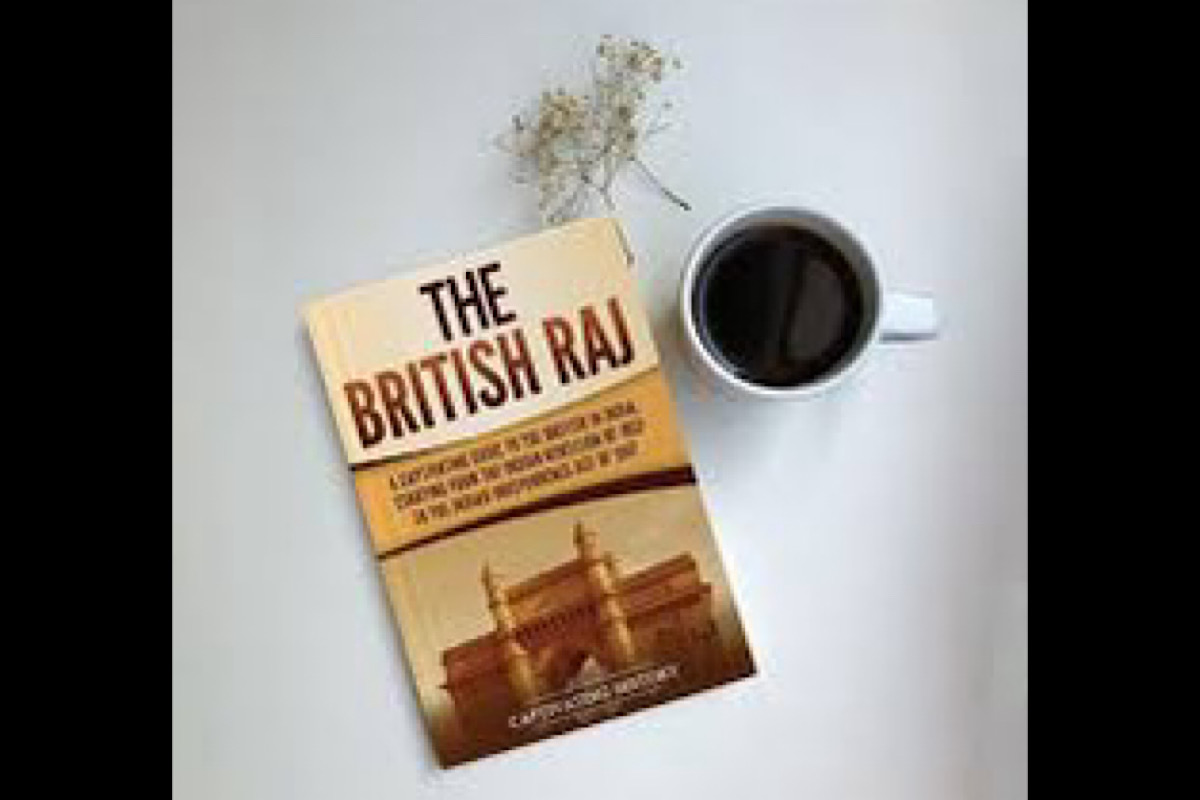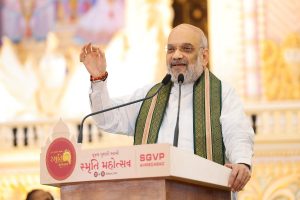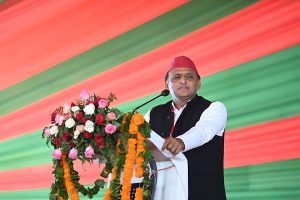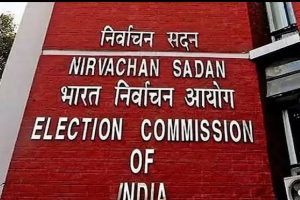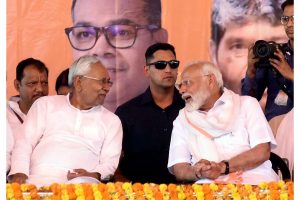From the ancient land of Bihar comes the story of two men pitted against each other; one was a British administrator from a privileged family, young and with a bright future in the colonies; the other was a Paharia tribal, a forest-dweller in the area now known as Santhal Parganas. Both were strong-willed and determined.
The British officer was on a civilizing mission for the tribal and farming communities, wanting them to lead peaceful settled lives; the Paharia was equally adept in understanding the exploitative nature of East India Company’s rule in the region. Meet Augustus Cleveland Esquire and Baba Tilka Majhi (spelt also Manjhi) whose paths crossed sometime in the 1780s. Cleveland (or Clevland) was ‘Collector of Revenues, judge of the Dewanny Adawlut of the Districts of Bhaugulpoor, Moongyr, Rajemehal’.
There are many layers of history and memory to be read in their encounter. Stories and fables of victors and victims abound; reports that contradict each other and attempts to cover up brutal facts of a power-seeking colonial West overwhelming the East. The Paharias were powerless, unable to comprehend the White Man’s ruthless subjugation in districts we today know as Bhagalpur, Munger, and Rajmahal (a subdivision in Sahibganj division of Jharkhand). Baba Tilka Majhi was a daring rebel leader, it is stated simply in ‘India’s Struggle for Freedom’, a pictorial album prepared by Department of Information and Culture Affairs, West Bengal government in 1987.
“His catapult was a deadly weapon and with this he killed no less a person than Cleveland, the collector of Bhagalpur.” In one sentence the imagination is ignited, a catapult? Did the tribal leader, obviously a marksman, use his handcrafted ‘gulel’ to smash the Collector’s head, or hit him on the forehead as he rode by. Or was it more likely that he used the traditional bow and arrow?
There are statues, old and new, depicting this tribal hero with traditional arms, not an innocuous-looking catapult. In the South Park Street Cemetery, Calcutta lies Cleveland’s grave (on plot 1484), the epitaph reads: “He departed this Life 12th of January 1784 ~ at Sea ~ on Board the Atlas Indiaman, proceeding to the Cape for the recovery of his Health, aged 29 Years…In his public capacity, he accomplished, by a System of Conciliation, what could never be effected by Military Coercion. He civilized a Savage Race of Mountaineers who for Ages had existed in a state of Barbarism…To his wise and beneficent Conduct the English East India Company were indebted for the Subjecting to their Government the numerous Inhabitants of that wild & extensive Country ~ The Jungleterry.
It may be assumed that the seriously injured Collector saheb, with a concussion, was moving to South Africa to recoup. The epitaph, in its bid to add dignity to his death, mentioned it as ‘departed at sea’; the catapult or bow and arrow attack by a rebel like Tilka Majhi was avoided. The geographical spread of Jungleterry or Jangal Terai was vast, as mentioned in Company records, covering the hill tracts of the present districts of Rajmahal, Bhagalpur and Kharagpur.
Not just in the 1780s, but for centuries before, it was the borders of Bengal and Bihar where the Santhals, Paharias, Mundas and Oraon people lived. Forest areas were where they were born, where they learnt how to survive, hunt, fish, and forage for their community; developing their own societal norms and rights in the forests. It was largely the Paharias who inhabited Jangal Tarai, and Baba Tilka Majhi emerged as their leader, ready to challenge the colonial might of the White officers in their uniforms, armed and astride their horses. As East India Company rule grew and Diwani rights came to be enforced, Paharias and Santhals found themselves without their right to live in the forest areas, nor get the advantage of forest produce.
In due course of time, they became rebellious. In 1784, the Company began their crackdown on the tribals, these original inhabitants of forests whom we today we speak of as the Adivasis. “Then a huge British army surrounded the entire Tilapore forest area in Bhagalpur,” it is recorded in ‘India’s Struggle for Freedom’. “For a long period of time, Tilka carried on a heroic but unequal struggle. Many Santal rebels were killed and Tilka was caught after being injured. He was tied to the tail of a horse and dragged all the way to Bhagalpur. Then his lacerated body was kept hanging to a banyan tree. This was 1784. A statue of Tilka has been erected in this spot after India became independent.” The murderous attack on Cleveland and the gory death of Tilka Manjhi are dramatic episodes in the micro-history of colonialism in India.
Explained Prof Sanjay Nath, in a paper titled ‘Augustus Cleveland and the Making of British Tribal Policy in Santal Parganas’, “the Paharias were pre-peasant communities who lived through hunting and foraging. We learn that they never acknowledged imperial supremacy either of the Mughals or the Bengal Nawabs. In fact, they never had direct relationship with any government before the British. They desired only the seclusion of their rocky home. Their desired seclusion was threatened by the neighbouring zamindars who lived in the Rajmahal hill area.” Tracing their conflicts and attacks, Prof Nath showed the advantage of the geographical position of the Paharias, who could descend from the hills, armed with powerful bamboo bows and poisoned arrows.
It was murder and loot all the way: with the tribals carrying off grain, salt, tobacco, money, cattle and goats and anything they could lay their hands on; retreating to their hills where no one dared to follow them. The imagery of plunder and loot became a stereotype which has dominated till date in modern literature, media news coverage and Bollywood films. What has been largely ignored, and rarely explained, are the horrific effects of famine, monsoon failures, the raising of well-armed East India Company troops to extract revenue from even tribals living off the forest.
It was a battle between unequal rivals; and the Company’s objective was to ensure the best arable land was cultivated, securing maximum land revenue for the treasury. Paharias were aware of the nexus between the zamindars and Company officials; their rebellions since the 1770s were targeted at both exploiters. Cleveland, playing a major role in the short span of time that he spent in the region, was appointed Assistant Magistrate at Bhagalpur in 1776, Judge Magistrate and Collector of Bhagalpur in 1779, and Judge of the Adawlat. He was barely 25 years old when he assumed charge as Collector and developed his policy to restrain the Paharias, ensuring peaceful trade and communication in the region.
A pension policy was started, explained Prof Nath in his paper; it brought the tribals and their leaders in the ambit of Company’s ‘welfarism’. Pensioners, getting anywhere between Rs 10 a month to Rs 2, were reporting on criminal activities, and maintaining peace and order. By 1780, 47 chiefs were on Company payrolls. It was in the raising of the Corps of Hill Archers that Cleveland left his mark. In 1772 Warren Hastings had raised a special ‘Corps of Light Infantry’ with about 800 well-armed and dressed persons; now Cleveland gave the Paharia warriors a chance to earn more and fight on colonial orders. Since they were stationed at Bhagalpur, the corps became the ‘Bhagalpur Hill Rangers’, continuing to exist for the next 70 years. Only after the revolt of 1857 was the corps disbanded when the armies were reorganized. William Hodges, one of the first professional painters to accompany Warren Hastings’ team, painted the Bhagalpur landscape.
A painting details ‘a camp of a thousand men formed by Augustus Clevland three miles from Bhagalpur with his mansion in the distance’. Legacies of Cleveland and Baba Tilka Majhi live on. As with most tribal leaders, there are statues dotting the land: modern Bhagalpur has a Tilka Manjhi chowk or roundabout, surrounded by retail outlets of IT and telecom companies. Bhagalpur University has been renamed as Tilka Manjhi Bhagalpur University in 1991 in commemoration of Tilka Majhi, ‘a freedom fighter’, as the University website declares. Recalled Dr Ajay Pratap of Department of History, Banaras Hindu University, “long years ago at the residence of my professor in Cambridge, a painting was pointed out to me. I could not place it. I was informed it was a famous landscape of Bhagalpur, my home town.” Bhaugulpoor continues to connect our histories, across time and space.
(The writer is a researcherwriter on history and heritage issues, and former deputy curator of Pradhanmantri Sangrahalaya)

